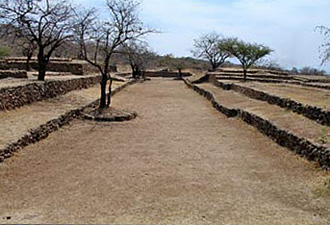
|  |  |  News from Around Banderas Bay | November 2008 News from Around Banderas Bay | November 2008  
History of Sport Resulting in Sudden Death Near Puerto Vallarta
 Jim Scherrer - PVNN Jim Scherrer - PVNN

Synthetic rubber, plastics, rayon, nylon and other synthetic materials were first developed from hydrocarbons such as oil, natural gas, and coal in the late 19th century but not really commercialized until during the 1900's. It's hard to imagine, but most all of today's "modern" materials have only gained popularity during the past 100 years. In fact, most of us retired geezers can clearly remember the days (before computers and televisions!) when very few items were made of plastic, synthetic fibers, or films

The first synthetic rubber polymer was created in 1910 and it was not until 1931 that Neoprene was first developed at Dupont. By 1944, during World War II when most of the natural rubber sources were under the control of the Japanese, the United States conducted the Synthetic Rubber Program (1939-1945) and the full scale production of synthetic rubber was initiated in the US. Today, there are more than 20 different varieties of synthetic rubber comprising about 60% of all the rubber produced

Rubber has unique properties in that it has a high degree of elasticity, memory, and toughness which makes it ideal for tires, belts, gaskets, and thousands of other products including balls. Yes balls; you name the sport and it's probably played with some sort of ball, either totally rubber or partially of rubber thus providing its bounce effect. Even many golf balls contain a solid inner core of rubber wrapped with bands of rubber while baseballs have an inner rubber core wrapped with yarn. Obviously, prior to the advent of synthetic rubber, all of these balls were made of natural rubber.

When we review the history of sport, we find that today's most popular sports of baseball, basketball, and football are relatively modern sports originating in the 19th century. The history of golf dates back to the 15th century while versions of tennis go back to the 12th century. On the other hand, the predecessor to modern day soccer or rugby dates back for many centuries, perhaps even millenniums. Ancient records indicate that games similar to soccer were played in China, Europe, Mesoamerica, and probably worldwide as long ago as 2,000 BC. There have been numerous ruins excavated in Mexico that clearly reveal a Mesoamerican ball game history dating back to 1,600 BC or approximately 3,600 years ago.

Some of the Mesoamerican ruins that have been recently excavated in Mexico are approximately 100 miles east of Puerto Vallarta in the state of Jalisco. These ruins are located throughout a large semi-circular arc around Puerto Vallarta from the state of Nayarit, through most all of Jalisco, and down to Colima, with the undisputed center being in the Tequila Valley between Vallarta and Guadalajara. The two major sites of Teuchitlan and Huitzilapa are located in the center of this region and easily visited during one of the 10 hour day tours from PV.


These archaeological sites have a number of commonalities, specifically their round pyramids with shaft tombs often referred to as Guachimontes, ceremonial platforms, and large ball fields. The inhabitants of these sites, referred to as being of the Teuchitlan or shaft tomb tradition, were an unknown civilization that existed from 300BC until the collapse of the Teuchitlan tradition sometime between 700AD and 900AD. Other than in this large area of Western Mexico, no other such shaft tombs have been found anywhere in Mesoamerica. Combined with the fact that ball fields abound in these areas, many of the artifacts recovered from the tombs clearly demonstrate the presence of pre-Hispanic ball games.

The main ball game was played on a long narrow field or court; sometimes more than 110 meters long, with seating along both sides. One such court (of the more than 6,000 that have been discovered in Mexico) in the Teuchitlan region is so well preserved that it will be touted as a major tourist destination for the next Pan Am games to be held in Guadalajara in 2011.

It is believed that the original game, known as ulama (from the Nahuatl word "olli" meaning rubber), was invented by the Olmecs (the word Olmec is also believed to be derived from the Nahuatl word "olli") around 1500BC. The games of ulama are known to be the world's oldest games ever played with rubber balls. Although the main game of ulama de cadera or hip ulama was played with a small hard rubber ball that was approximately 8 inches in diameter and weighed between 5-7 pounds, variations of the game included ulama de antebrazo or forearm ulama which incorporated a slightly lighter and smaller ball and ulama de mazo or ulama de palo which were played with 15 pound two handed paddles and a 1 pound rubber ball. These games were played either one on one or with small teams of two to five players per team, depending on the game and the field size.

These high speed, dangerous, and often violent games were frequently played from dawn to dusk, providing a spectator sport, an astrological study, and a religious / political engagement for all those that attended. The games, especially hip ulama, were so dangerous that in some of the excavated tombs, all of the unearthed adult male skeletons had broken hips!

You think the Super Bowl, World Series, US Open, Stanley Cup, etc are serious events; well the games of ulama give a new meaning to the word serious! They played for vast amounts of wealth including all of their jewelry, clothing, and animals, their homes, farms and even kingdoms, for their children and wives to be used as slaves by the winners, and most importantly (to them), for their own lives.

Through artifacts, murals, etc., it has been determined that frequently the loser was sacrificed by being decapitated with an obsidian bladed knife. Other records indicate that upon completion of the game, the losing captain or coach was sacrificed. Some interpretations indicate that it was only the winner that was worthy of this highly esteemed death; that the winner was the fortunate one that got an immediate "one way trip ticket to heaven".

Regardless of which interpretation is correct, human sacrifice (as well as gambling) was an essential element of the game, making it a deadly serious sport; you might even say that perhaps this was the origin of the term "winner take all"! Because death was believed necessary for life to continue, by decapitating the loser, they were ensuring the sun would rise the next day and the corn would grow tall.

 This violent game of "you bet your life" probably wouldn't go over too well today, however during the Late Formative and the Early Classic periods it must have seemed quite logical; if nothing else, it must have been very exciting and entertaining! This violent game of "you bet your life" probably wouldn't go over too well today, however during the Late Formative and the Early Classic periods it must have seemed quite logical; if nothing else, it must have been very exciting and entertaining!

To this day, the traditional game of ulama continues to be played in certain areas of Mexico. They have attempted to reproduce the original balls from cheaper, synthetic rubber but have had little success; the players complain they are too hard and lack the proper bounce. Therefore, the more expensive modern latex ulama balls are made by the traditional technique of using boiled rubber sap mixed with other ingredients required for vulcanization. Today, the loser buys dinner whereas in the good ol' days, the loser was dinner!

In summarizing, during your next trip to Vallarta, you'll probably see athletes playing soccer; you might even see them playing basketball, baseball, or volleyball. However, you're a couple thousand years too late if you'd like to take in an exciting game of ulama; a game that gave the unequivocal and literal meaning to the term "playing to sudden death"!
 The founder of Puerto Vallarta Real Estate Buyers' Agents (PVREBA), Jim Scherrer is a retired entrepreneur who has owned property in Puerto Vallarta for 24 years. Utilizing his experience and extensive knowledge of the area, Jim has written a series of informative articles about travel to and retirement in Puerto Vallarta, which you can read on his website at PVREBA.com. The founder of Puerto Vallarta Real Estate Buyers' Agents (PVREBA), Jim Scherrer is a retired entrepreneur who has owned property in Puerto Vallarta for 24 years. Utilizing his experience and extensive knowledge of the area, Jim has written a series of informative articles about travel to and retirement in Puerto Vallarta, which you can read on his website at PVREBA.com.

Click HERE for more articles by Jim Scherrer. |

 |
|  |



